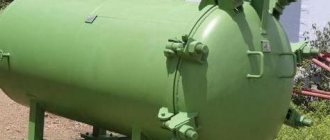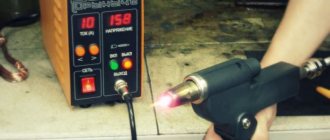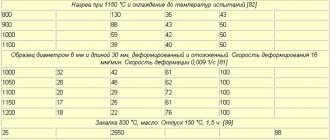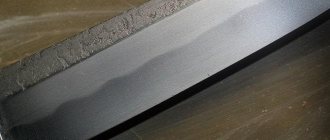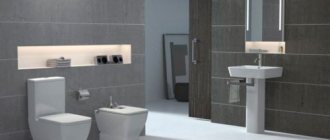I welcome all readers to my small blog about searching for antiquities! Disputes about the size of search sensors for metal detectors continue on forums and social networks. Some people believe that many finds will be made exclusively with large-diameter “rudders,” but at the same time there are adherents of small reels, almost sniper reels. In this article I would like to talk about both the positive qualities of large reels and their negative side.
Before Equinox, I had two metal detectors: Aska Euro and Terka 705. Each of them had coils in their arsenal that were larger in diameter than the standard ones: Detech Ultimate and Mars Goliath. Therefore, I will rely on my own experience, as well as on the stories of comrades who drive through the fields with steering wheels. Let's start with the shortcomings.
Weight
Having screwed a used Mars Goliath, which was freshly received in the mail, with a diameter of 15 inches, to the device and picked up the metal detector, the first thing I noticed was the heaviness of the Grater 705. It began to noticeably strain my hand and in order to swing the device, I had to expend more strength. Besides, it was spring and during the months of winter, my body had become unaccustomed to cops. By evening my hand was noticeably tired. But later I got used to the gravity and, as if nothing had happened, I cut through the air with the steering wheel. On ICQ, Detech was not so heavy. And this reel was noticeably smaller - 13 inches versus the Mars fifteen. In general, with a large coil, more effort will be spent on digging, because it will be more difficult to keep a heavier search sensor at a certain level.
Pits
The next point I want to talk about also concerns energy costs. With larger diameter coils, you get holes that are deeper and wider than those you dig with standard coils. The reason is that with a rudder it is more difficult to find the center of the target, and they see finds at greater depths. Such a coil, as it were, accelerates the device and allows you to pick out coins, buttons and crosses from wherever the staff would take them. If the find is small, it takes a long time to drive it around in such a dump heap. In this case, it is difficult without a pinpointer and precious minutes of the cop are spent searching for the target.
Classification by coil types.
Until recently, it was mono coils that came with the metal detector. They have a cone-shaped signal, which is better suited for spot searching or searching in contaminated areas. However, this type of signal covers a small amount of ground, and the swing for each step should overlap the previous one by about half. So at a depth of 10 centimeters, the diameter of the beam with a 9-inch coil is reduced by half, and at a depth of 20 centimeters it will be only 3-5 centimeters. Mono coils are best used after detecting a cluster of targets. This will reduce the area of the cop and get a clearer picture of the alleged subject. With the advent of DoubleD coils, search efficiency has increased several times, and the latest metal detectors are supplied with this type of coil. They got their name because of the mirror arrangement of the receiving and transmitting loops, reminiscent of two inverted letters “D”. The signal in the DD coils has the shape of a cylinder, which makes it possible to uniformly scan the area under the coil. This type of coil is ideal for highly mineralized soils and scanning large areas. But the difference between DD and mono coils is not the only criterion for improving your results.
Clumsiness
It’s generally inconvenient to walk through the forest with a large reel! You constantly hit tree trunks and stumps, it doesn’t go between the roots, and in general in such places you constantly hit something with the steering wheel. Also, during rough plowing, it will not ring through all the clods of earth and unevenness. It has to be carried out exactly over all the tubercles and depressions, thereby missing finds, because in about half of the cases the radiation does not penetrate into the ground. If there is only a large-diameter coil on the metal detector, the search engine will not be able to dig in abandoned houses or dig into the foundation, because it will be inconvenient to work with. And it will capture all targets, be it ink or color, at once, giving the operator an incomprehensible cacophony.
It's time to move on to the advantages of large-diameter coils, thanks to which they outperform standard sensors and sniper rifles.
Comparison of search coils for Minelab metal detectors.
We continue to deal with search coils, because the main problem for beginners after purchasing a metal detector is choosing the most suitable search coil for their purposes. Of course, most novice diggers continue their search with a standard coil, but sooner or later the moment comes when a treasure hunter thinks about upgrading his device, and most often an upgrade means changing the search coil to a more powerful one. So let's figure out which coil is best to install on our favorite Minelab metal detectors, although it is worth noting that the coils that we will analyze are also suitable for other models. In general, let’s compare 5 coils so that in the future you don’t choose blindly, but know exactly which search coil is best suited for which purposes.
Let's look at the search coils:
9″ mono is a standard coil for Terra 34 and Terra 305 metal detectors.
10.5″ DD 7.5 kHz is a standard DD coil operating at the most used frequency of 7.5 kHz.
Coiltek 15″ DD 7.5 kHz - large DD-coil (large wheel - that’s what diggers call it) for metal detectors of the x-terra series.
Nel Tornado 12*13″ is a supercoil with a signal amplifier from Nel.
Ellipse coil 10*5″ 18.5 kHz - elliptical high-frequency coil for searching for small things.
These search coils are probably the most common ones used by diggers. Of course, we could also include small sniper reels here, both mono and DD, but everyone already understands what sniper reels are needed for, so we will not indicate them in our comparison review.
Comparison of target detection depth
We will compare these search coils using the example of the popular Ekaterina nickel. Of course, the search depth presented here is very relative, since you know that the detection depth is influenced by a huge number of external factors, such as soil mineralization, moisture, the presence or absence of dense dried grass, etc. But we can still see that some search coil models have gone much further than their competitors. So, let's go.
9" mono - 30cm 10.5" DD 7.5 kHz - 35 cm Coiltek 15" DD 7.5 - 40 cm Nel Tornado 12*13" - 45 cm Ellipse coil 10*5" 18.5 kHz - 25 cm.
As you can see, Nel Tornado is ahead of all reels; this reel is the most powerful of all presented. And it’s not surprising, because it has a built-in signal amplifier, which, according to the developers, increases the depth, all other things being equal, by 50 percent. Of course, there’s no smell of 50 percent here, but the depth is noticeably greater, every digger knows that he can give an advantage of 5-10 cm. Therefore, if you like to walk through the fields in search of coins, choose 3 coils from the list - 10.5 dd, coiltec 15″ and a tornado. The tornado hits deeper - but a larger area can be surveyed with the “big wheel” from the coiltec.
Comparison of the effectiveness of search coils when searching in different areas
Next, we will consider the convenience of working in various areas. After all, we dig not only in fields where there is no metal waste. Very often we find ourselves in heavily littered areas, digging on beaches - but the conditions here are very different, and accordingly, the coils are suitable to a greater or lesser extent for each site.
A place with a lot of metal trash.
Mono 9″ is very convenient to work with, almost an ideal option. DD 10.5″ - average, inconvenient to center, I would even say that it’s better not to walk through garbage with such a reel. Coiltek 15″ is complete crap, absolutely not suitable for searching in heavily littered areas. Tornado - the same as dd10.5″, that is, of course it can work, but mono 9″ is much more convenient. Ellipse 18.5 kHz - excellent work, “cuts out” small colored targets well. Although more suitable for the beach.
Standard endless field
